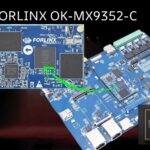In this technology era, several types of embedded systems exist around us within the electronic devices that are part of our day-to-day lives. These embedded systems are typically categorized considering several key factors, including their intended functions, performance capabilities, connectivity, safety features, operating characteristics, application domains, and power consumption profiles.
It is a good starting point for an aspiring embedded designer to understand the various types of embedded systems that exist around the world. In this blog, we will understand the various types of embedded systems and their importance with the help of a few good real-world examples.

A Detailed Comparison of 12 Different Types of Embedded Systems
Standalone vs. Networked Embedded Systems
Standalone Embedded Systems
Standalone embedded systems are the types of embedded systems that work independently. Standalone embedded systems do not depend on external sources or networks to perform their functions. All the necessary resources, data, and instructions are typically stored or provided within the system itself.
Standalone embedded systems are typically designed for a specific purpose or task. These types of embedded systems perform that task efficiently and do not hold the flexibility to adapt to new functions or update their firmware through network connections.
In case the firmware update is required in these types of embedded systems, the service person can upgrade the firmware through the external USB flash drive, or some other wired communication i.e. RS485, CAN, Modbus etc.
These systems have all the embedded systems components they need to function enclosed within a single unit. All the embedded system components often consist of a different types of microcontroller or microprocessor, memory, input/output interfaces, clock sources, sensors, power supplies, and dedicated software or firmware that instructs the system on how to execute its tasks.
Because these types of embedded systems operate independently and are not connected to external networks, standalone embedded systems are often considered more secure and less susceptible to external vulnerabilities like hacking or unauthorized access. Their isolation from the external world can enhance their reliability for specific tasks.
Home appliance devices like microwave ovens, washing machines, and refrigerators often contain standalone embedded systems to manage their operations.
Consumer electronic devices like digital cameras, handheld gaming consoles, and audio players have standalone embedded systems that control their core functions independently.
Many industrial automation machines and equipment have standalone embedded control systems for tasks such as monitoring and regulating temperature, pressure, or speed within a factory.
Networked Embedded Systems
Networked embedded systems, unlike standalone ones, are designed to connect with external networks like the Internet and local intranets. These systems can send and receive data over these networks, enabling them to communicate with various devices and systems.
Networked embedded systems are highly versatile. These types of embedded systems can adapt to a wide range of tasks and needs, often by using software updates and other flexible configurations.
These types of embedded systems are excellent at exchanging data among multiple connected devices, cloud services, or user interfaces over wireless and wired networked infrastructure.
Networked embedded systems are mainly used in applications where real-time data and efficient communication are important. These types of embedded systems are efficiently capable of providing immediate updates, monitoring, and real-time control. This flawless and precise information delivery is especially required in areas like remote monitoring and industrial automation.
Networked embedded systems are found in many technology areas, i.e. Internet of Things (IoT) and smart home applications, industrial control, and advanced telecommunications.
A few real-world examples of these types of embedded systems are smart thermostats that you can control with your smartphone connected over Wi-Fi or cellular network, industrial sensors that send important data to a central system, and networked surveillance cameras for remote monitoring and security, Vehicle to Vehicle(V2V) or Vehicle to Infrastructure (V2X), Wireless Sensor Networks (WSN), mobile IoT devices.
The connection in networked embedded systems brings specific challenges, mainly security concerns like cyberattacks and unauthorized access. This means strong security measures are necessary to protect these systems from external threats and vulnerabilities.
Non-deterministic vs. Real-time embedded systems
Non-deterministic Embedded Systems
Non-deterministic embedded systems are designed for applications where exact timing is not critical. These types of embedded systems do not guarantee a specific response time and do not need to meet strict deadlines. These systems often prioritize flexibility, and their performance can vary depending on the workload.
The key factors of these types of embedded systems are balancing performance and flexibility, managing resource allocation in a multi-tasking environment, and Adapting to changing workloads.
Non-deterministic embedded systems find applications in scenarios where flexibility and adaptability are more important than precise timing. Examples include consumer electronics, general-purpose computers, and some IoT devices. These systems can handle a wide range of tasks without requiring strict timing constraints.
Non-deterministic embedded systems often include general-purpose programming languages and standard development environments. These types of embedded systems offer more flexibility in terms of tool selection.
Real-time Embedded Systems
Real-time embedded systems are carefully designed to meet strict timing requirements. These types of embedded systems are designed to respond within set deadlines, ensuring the precise execution of crucial tasks.
These systems can be categorized into “hard real-time” where missing a deadline is disastrous and “soft real-time” where occasional delays are acceptable within defined limits.
Deterministic behavior is a fundamental characteristic of real-time embedded systems. Deterministic behavior ensures that tasks and operations within the system are executed with a known and predictable timing. This deterministic behavior of real-time embedded systems makes them deterministic embedded systems.
To achieve deterministic behavior, real-time embedded systems employ scheduling algorithms like priority-driven scheduling and strict resource allocation. These mechanisms ensure that higher-priority tasks take precedence over lower-priority ones and that critical tasks receive dedicated resources, leading to consistent and predictable task execution.
Another key characteristic of real-time embedded systems is temporal predictability. Temporal predictability, in simple terms, means that these types of embedded systems can accurately predict the event. This predictability is essential in situations where timing is critical, like opening the car’s airbag based on the sensor’s input or ensuring a car’s brakes respond exactly when you press them.
These types of embedded systems are used in applications where precision, reliability, and repeatability are imperative. This concept refers to the system’s ability to consistently produce identical responses when subjected to the same inputs and operating conditions.
A good real-life example of a real-time embedded system is an Anti-Lock Braking System (ABS) in Automobiles.
ABS takes the input from wheel speed sensors that constantly monitor the speed of each wheel.
A dedicated real-time embedded system, often referred to as the Electronic Control Unit (ECU) or ABS Controller, processes data from the sensors and continuously analyzes the wheel speed data.
When it detects that a wheel is about to lock up due to hard braking (a situation that could cause the vehicle to skid), it makes a real-time decision.
The ABS then modulates brake pressure to the affected wheel by rapidly applying and releasing the brakes. This action is performed with extreme precision and speed.
By rapidly and precisely adjusting brake pressure, ABS prevents the wheel from locking up, allowing it to maintain traction with the road surface. As a result, the vehicle can steer and respond to the driver’s input even during emergency braking, reducing the risk of accidents.
Portable vs. Static Embedded Systems
Portable Embedded Systems
These types of embedded systems are designed for mobility applications. These types of embedded systems are often found in battery-powered devices like smartphones, tablets, and wearable devices like location trackers, healthcare wearable devices, and smartwatches. Portability allows these types of embedded system to fulfill the needs of users on the move, making them indispensable in today’s connected world.
Due to power and size constraints, portable systems may have limited processing power compared to static systems. They prioritize energy efficiency and size over raw computational capabilities.
Static Embedded Systems
Static embedded systems are firmly fixed in place and are usually integrated into larger systems or equipment. These types of embedded systems do not possess the same level of mobility as portable systems and are commonly found in industrial machinery, manufacturing lines, and infrastructure like traffic lights.
Static embedded systems are usually connected to a stable power source, which allows for higher computational capabilities and constant operation for a long duration of time. In these types of embedded systems energy conservation is still important but often not as critical as in portable systems.
Static embedded systems could be considered multiprocessing and can handle more demanding parallel tasks. This makes them suitable for applications that require real-time processing, extensive data analysis, and complex control tasks.
Static systems are commonly used in industrial automation, control systems, automotive manufacturing, telecommunications infrastructure, and critical infrastructure like power grids. Their role is to ensure reliability, efficiency, and safety in complex systems.
Distributed vs. Centralized Embedded Systems
Distributed Embedded Systems
Distributed embedded systems feature a decentralized architecture where multiple processing units, often referred to as “nodes,” are interconnected to work collectively.
These types of embedded systems rely on robust communication networks, like Controller Area Network (CAN), Local Area Network (LAN), RS485, or Ethernet, to facilitate real-time data exchange between nodes.
In distributed embedded systems, the nodes are connected over a mesh network topology along with the backup nodes, Backup nodes are necessary to ensure high availability and fault tolerance, in case a primary node fails.
Smart grids, industrial automation, and networked robotics are good examples of distributed embedded systems where data from multiple sources must be processed collaboratively and connected over the available networked infrastructure.
Centralized Embedded Systems
Centralized embedded systems have a singular, primary processing unit at the core of the architecture, often referred to as the “Master Controller Module.”
The Master controller acts as a single point of control, making it easier to manage and monitor the entire system. These types of embedded systems can be considered complex embedded systems because they require complex algorithms to handle the multiple tasks generated by the connected devices.
Centralized embedded systems allocate resources centrally, which can be more efficient for certain tasks. These types of embedded systems require more powerful processors to accomplish the specific task.
Data flow in centralized systems is typically radial, with sensors and peripherals connected directly to the central controller. This can lead to reduced complexity in communication networks.
Centralized embedded systems are commonly used in scenarios where precise control and management of resources are vital, such as in automotive Engine Control Units (ECUs), industrial PLCs, and home automation hubs.
Distributed embedded systems and Centralized embedded systems are also considered networked embedded systems as the communication infrastructure is connected over the available network within the system.
Energy-Efficient vs. Performance-Oriented Systems
Energy-Efficient Embedded Systems
Energy-efficient embedded systems prioritize low power consumption hence these types of embedded systems consist of power-efficient hardware components.
These types of embedded systems are ideal for battery-powered devices, extending the operational lifespan of devices like smartphones, IoT sensors, wearables devices, etc.
Innovative energy harvesting technologies like small-scale solar cells or piezoelectric generators, and RF power energy harvesting makes these types of embedded systems more sustainable in term of deriving the power from the environment.
These types of embedded systems contain efficient PMIC and use power-efficient algorithms that minimize computation and data transfer. Implement power-saving sleep modes to minimize power consumption during idle periods.
Energy-efficient systems are prevalent in battery-powered and portable devices where prolonged battery life is essential, such as in remote sensors and medical implants.
Performance-Oriented Embedded Systems
Performance-oriented systems are designed to deliver high computational power, often utilizing powerful multi-core microprocessors to ensure parallel processing capabilities to handle complex tasks efficiently.
These types of embedded systems usually deploy in applications requiring real-time data processing, like autonomous vehicles, industrial robotics, gaming consoles Network gateways, 3D image processing, scientific computing, etc.
Minimizing latency is critical in these types of embedded systems, ensuring rapid data transfer and processing among the peripherals.
To ensure top performance, performance-oriented embedded systems often need advanced cooling solutions to handle the heat produced by powerful processors, preventing overheating and related issues.
Safety-Critical vs. Non-Safety-Critical Embedded Systems
Safety-Critical Embedded Systems
Safety-critical systems are used in applications where human lives or significant assets are at risk if system failures occur, such as in medical devices, aerospace, automotive braking and airbag systems, and nuclear power plants.
Safety-critical systems prioritize deterministic behavior and are called real-time embedded systems. These types of embedded systems consistently provide the same response to the same inputs. This predictability is vital for ensuring the system behaves as expected.
Many safety-critical systems employ redundancy, which involves duplicating components or functions to ensure system reliability. Redundancy can be both hardware and software-based.
FMEA (failure mode and effects analysis) is a systematic approach used to evaluate how potential failures in safety-critical systems could impact their functionality and safety. It’s a critical part of system design and validation.
Safety-critical systems often need to adhere to rigorous industry-specific standards and regulations, such as ISO 26262 in automotive or DO-178C in aviation.
The design and development of safety-critical systems prioritize risk mitigation and safety features, often involving fault-tolerant mechanisms to handle failures accurately.
Non-Safety-Critical Embedded Systems
Non-safety-critical embedded systems are more commonly found in general-purpose applications where system failure does not lead to life-threatening consequences. For Example, in consumer electronics, office equipment, and home appliances. In these types of embedded systems if a failure occurs that does not directly create a catastrophe.
Performance, efficiency, and delivering the best user experience could be considered the priority in these types of embedded systems.
Non-safety-critical systems are usually considered the cost-effective design because the hardware design does not include the safety-critical approaches and only follows the general industry standards and regulations.
Conclusion
Embedded hardware designers and professionals play a critical role in choosing and developing embedded systems designed for specific applications. Understanding the various categories and their application is essential for making informed decisions, and ensuring reliability, efficiency, and optimal functionality.
Author Profile
- 20+ years embedded hardware design professional with a burning passion for teaching. Sharing the intricate world of embedded hardware is my mission and joy.
Latest entries
 Tech Updates17 July 2024Meet the Future of Industrial Connectivity -Sona™ IF573 Wi-Fi 6/6E Module From Ezurio
Tech Updates17 July 2024Meet the Future of Industrial Connectivity -Sona™ IF573 Wi-Fi 6/6E Module From Ezurio How To15 July 2024Forlinx OK-MX9352-C – A Versatile Powerhouse SBC for Diverse Applications
How To15 July 2024Forlinx OK-MX9352-C – A Versatile Powerhouse SBC for Diverse Applications Communication8 July 2024Ethernet Cable – Twisted-Pair Cable Types Explained
Communication8 July 2024Ethernet Cable – Twisted-Pair Cable Types Explained Communication23 June 2024Ethernet PCB Layout Design Guidelines
Communication23 June 2024Ethernet PCB Layout Design Guidelines











